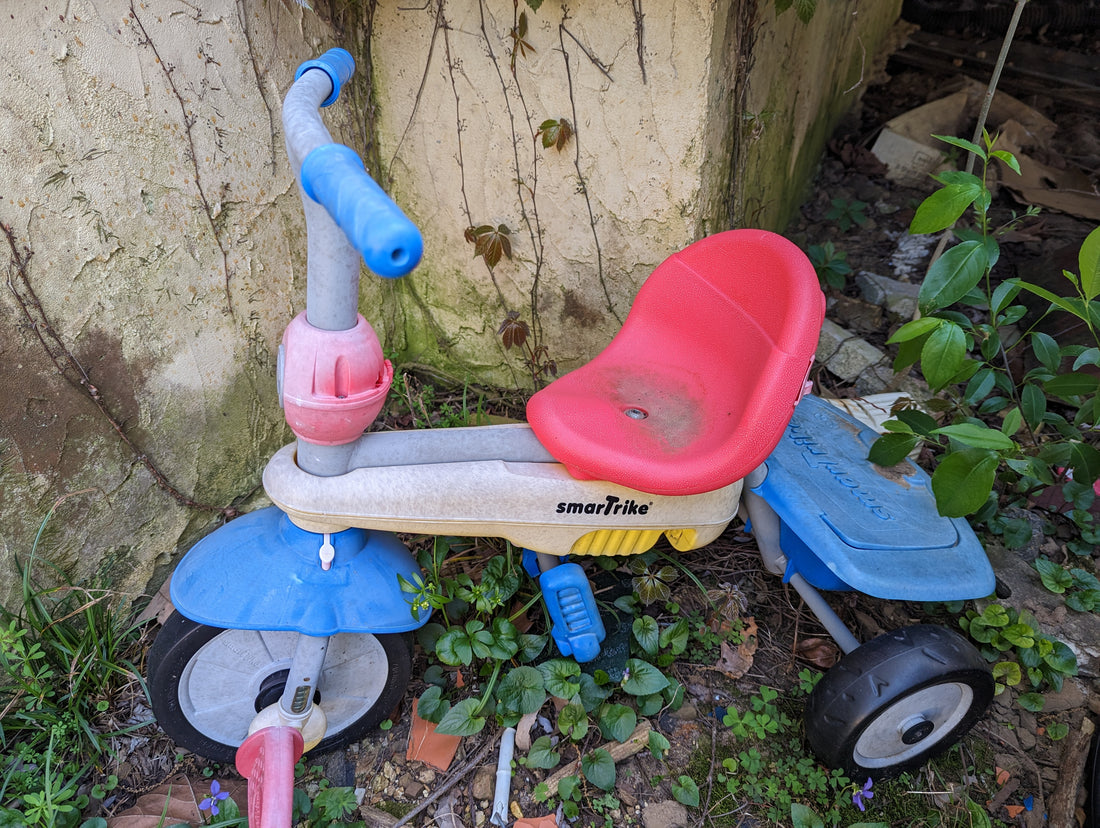
Best 3D printer filament to use outside
Share

Outdoor applications sometimes can benefit from filaments that are resistant to high temperatures and to ultraviolet (UV) sunlight. The temperature at which the plastic starts to bend under a light load is called its heat deflection temperature, and we’ll use that metric to compare alternative 3D printer filaments. UV light can cause whitewashing (like what you see in the picture above), and can cause the filament to become brittle so that it easy cracks or breaks.
It is often okay for outdoor applications to use any filament (even PLA filament), but if you want to be extra sure that the part will last as long as possible, you’ll want to use one of the following 3D printer filament materials which are listed in order of printing difficulty from least difficult to most difficult.
Best 3D printer filaments for outdoor use:
- PETG (Polyethylene Terephthalate Glycol): PETG filament has good UV resistance, and high impact-strength. Its heat deflection temperature is greater than 70 ⁰C (158 ⁰F) which is almost certainly good enough for your outdoor application. It is the second easiest filament to print with, just behind PLA. It prints at a nozzle temperature around 240 ⁰C and a bed temperature around 70 ⁰C. Stringing and oozing are the primary challenges when printing PETG.
- ASA (Acrylonitrile Styrene Acrylate): ASA is UV-resistant and weather-resistant, making it an excellent filament choice for outdoor applications. It has good mechanical properties, and its heat deflection temperature is above 82 ⁰C (180 ⁰F), so you can expect it to survive inside a car over the summer in a hot climate. For large prints, you’ll want a heated enclosure to print ASA, but for smaller prints you can get away with just stifling airflow around the printer with a regular enclosure.
- ABS (Acrylonitrile Butadiene Styrene): ABS filament has a high heat deflection temperature that is greater than 85 °C (185 ⁰F) and is often used for outdoor applications. It tends to have poor UV resistance, so it becomes brittle and loses color over time in sunlight. You can improve its UV resistance by applying a UV-resistant coating or paint. ABS’s printability is similar to ASA’s. Large prints will suffer from warping and curling and cracking between print layers unless you use an enclosure. Printing in ABS also produces fumes, so you’ll want to print in a well ventilated area.
- Polycarbonate (PC): PC is a very strong and durable filament with a very high heat deflection temperature above 124 ⁰C (255 ⁰F). It also has good UV resistance, but it may require a specialized printer with a heated build chamber and high-temperature bed (140 ⁰C) and nozzle (300 ⁰C) to print successfully. Glasses lenses are often made of PC.

You may also want to be aware of which filaments are generally considered to not be suitable for outdoor applications in hot sunlight and why. Again, these materials often work just fine outside, and it largely depends on what you’re printing and the latitude and climate it will experience. For example, the trail marker above could be printed in PLA work just fine. The less than ideal filaments are again listed in order of ease of printing.
Other 3D printer filaments and their usability outside:
- PLA (Polylactic Acid): PLA filament has a heat deflection temperature of 55 °C (131 °F) and tends to degrade when exposed to UV light. It is possible to reach these temperatures if the PLA part is left in a car in a hot climate, but it’s uncommon. PLA is generally not recommended for outdoor applications, especially in hot environments, but it can work fine for outdoor decorations that are not a safety concern. PLA’s primary advantage is that it has the best bed adhesion and layer adhesion, and it is the least prone to warping and curling of any 3D printer filament material. If you want to keep it simple, PLA may be the best option for you even though it’s not the ideal outdoor filament.
- TPU (Thermoplastic Polyurethane): TPU is a flexible filament with good UV resistance, but its extremely low heat deflection temperature of 38 °C (100 °F) makes it poorly suited for outdoor use. Even at common outdoor temperatures, TPU parts may soften, deform, or lose mechanical strength.
- HIPS (High Impact Polystyrene): HIPS filament has a high enough heat deflection temperature for outdoor use (80 °C and 176 °F), but UV light exposure will make HIPS brittle, discolored, and it will lose its mechanical properties. HIPS is similar to ABS or ASA in terms of printability.
- Nylon: Nylon filament has good mechanical properties and temperature resistance (up to 80-180°C, depending on the type of Nylon). However, prolonged exposure to UV light will weaken nylon and fade its color. Nylon is also difficult to print with because it is extremely hydroscopic (absorbs water) and subject to hydrolysis (degradation due to water exposure). Therefore, nylon must be dried immediately before 3D printing. Also, nylon needs to be printed with nozzle temperatures around 240 °C and in a heat enclosure (to prevent curling).
For outdoor applications in hot sunlight, it's essential to consider factors such as temperature resistance, UV resistance, and how they affect the mechanical properties of your 3D printed part. The best 3d printer filament materials for outdoor use include PETG, ASA, ABS, and Polycarbonate. PETG is by far the easiest to print with in that list, but if ease of printing is your main concern, your part will not get extremely hot, and there is no safety concern, then your best option is probably to use PLA filament.
